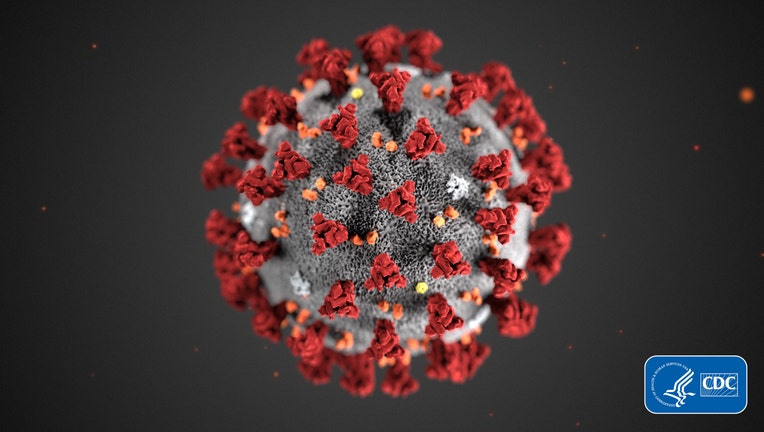Researchers say COVID-19 product of ‘natural evolution’ not a ‘laboratory construct’

This illustration, created at the Centers for Disease Control and Prevention (CDC), reveals ultrastructural morphology exhibited by coronaviruses, including the novel coronavirus identified as the cause of an outbreak of respiratory illness first det (Photo by Smith Collection/Gado/Getty Images)
LOS ANGELES - According to the journal Nature Medicine, researchers have found that the novel SARS-CoV-2 virus, also commonly referred to as COVID-19, is a product of natural evolutionary selection and is not a “laboratory construct or purposefully manipulated” coronavirus.
According to the U.S. Centers for Disease Control and Prevention, SARS-CoV-2 is the virus that causes COVID-19.
The new research into the origins of the virus comes as the COVID-19 pandemic has infected more than 190,000 people globally, killing more than 7,500 around the world. Cases of the virus have been confirmed in all 50 states in the U.S.
MAP: This is where there are confirmed coronavirus cases in the US and around the world
Researchers noted in the published article that it “is improbable that SARS-CoV-2 emerged through laboratory manipulation of a related SARS-CoV-like coronavirus.”
The receptor-binding domain (RBD) of SARS-CoV-2, which acts as a mechanism for the virus to attach itself to host cells, is specifically optimized for binding to a human receptor called ACE 2, which acts as an entry point for the virus to infect cells.
The evidence for the COVID-19 virus being the result of natural selection is the the molecular structure of the virus itself, according to researchers. Had the disease been engineered in some way, it would have had to be of the same structure of a previously known virus. But the molecular structure of the novel coronavirus has significantly differed from previously observed coronaviruses, researchers said.
RELATED: CoronavirusNOW.com, FOX launches national hub for COVID-19 news and updates.
"These two features of the virus, the mutations in the RBD portion of the spike protein and its distinct backbone, rules out laboratory manipulation as a potential origin for SARS-CoV-2" said Kristian Andersen, Ph.D., an author of the research paper and associate professor of immunology and microbiology at Scripps Research.
Researchers believe that the virus originated in animal markets in Wuhan, China where natural selection allowed the virus to eventually transfer to humans, which scientists say has been the common method of transfer for coronavirus outbreaks.
RELATED: Coronavirus: What to do if you’re told to self-quarantine
What is unclear is whether or not COVID-19 evolved to its current molecular structure before or after transferring to humans. Researchers worry that if the virus adapted to its current state within an animal source instead of after transferring to humans, it could raise the probability of future outbreaks, as the original strain of the virus could still be circulating and evolving within the animal population.
Josie Goulding, Ph.D., epidemics lead at U.K.-based Wellcome Trust, said the findings by Andersen and his colleagues are "crucially important to bring an evidence-based view to the rumors that have been circulating about the origins of the virus (SARS-CoV-2) causing COVID-19."
RELATED: CDC’s ‘flatten the curve’ graphic shows why social distancing amid coronavirus pandemic is necessary
"They conclude that the virus is the product of natural evolution," Goulding added, "ending any speculation about deliberate genetic engineering."
According to the CDC, coronaviruses are a large family of viruses that are common in people and many different species of animals. Many people have previously experienced a coronavirus in the form of the common cold. But COVID-19 has not previously been identified in humans, and the CDC believes it likely has origins in bats. However, there are no currently documented cases of bat-human transmission.
The World Health Organization declared the COVID-19 virus a global pandemic on March 11 after cases continued to spread sustainably without any successful form of containment worldwide.



